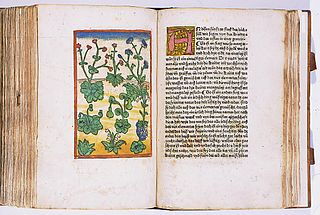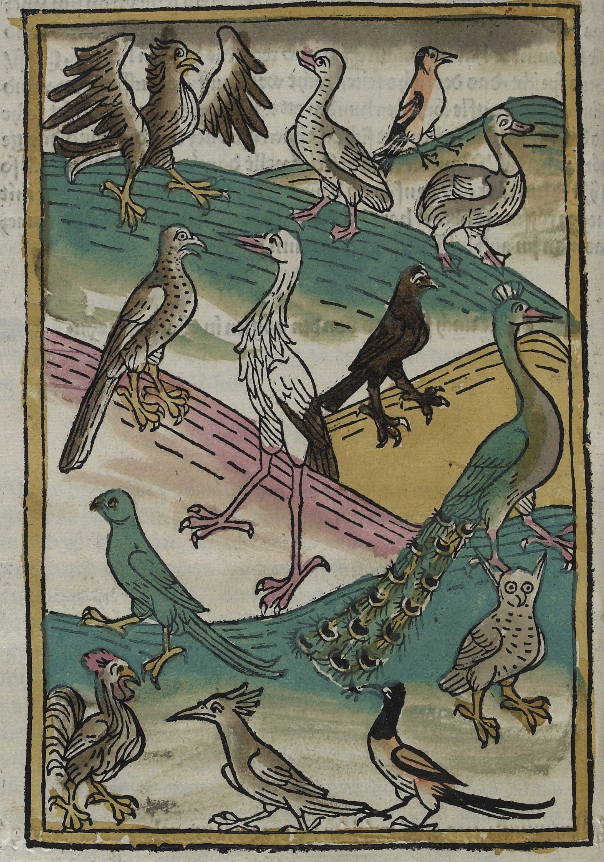For bibliophiles, antiquarian booksellers and librarians, incunables are the crown jewels. These are the earliest books, pamphlets and broadsheets produced during the 60 year period following Johannes Gutenberg‘s development of the printing press in Europe in about 1440. Incunable are all things printed with these new presses until 1 January 1501. And while there are, surprisingly, a lot of incunables—at least 30,000 editions and more than 200,000 extant volumes—they are still rare enough that they are particularly treasured (and expensive to buy [1]).
The word ‘incunable‘ is the English form of the Latin incunabula which means either ‘swaddling clothes’ or ‘cradle’, and thus obliquely refers to the early stages in the development of something, like books. The Gutenberg Bible is certainly the most famous of the incunabula, but once the obvious efficiency of movable type caught on, incunables were produced on a wide array of topics, though religious texts seem to dominate. Some were printed using a carved wooden block for each page, whereas others used the movable lead type for text, and woodcuts for the illustrations.
So, when Lauren Williams, the librarian at McGill University’s Blacker-Wood Collection [2], asked me if I wanted to see their incunable, I did not hesitate to say ‘yes’. Like many incunables, the Blacker-wood volume is hardbound in wood, but unlike most it is hand-coloured and contains probably the first printed and hand-coloured images of recognizable birds. This is the Buch der Natur by Konrad von Megenberg published—or rather, printed—in 1478 by Johannes Bämler in Augsburg, Germany. Bämler was a printer and bookseller, and the Buch der Natur is probably his most famous incunable.

Konrad was a German scholar who lived for most of the 1300s when he wrote more than 30 books on a wide variety of topics. In his day, of course, there were no printing presses so his books were printed by hand from woodcuts or transcribed by hand. His Buch der Natur was written around 1350, and was the first book of natural history to be written in German. In it he tried to survey everything that was known about natural history at the time, heavily based on a 13th century work by Thomas of Cantimpré, written in Latin. Of the eight chapters in Buch der Natur, there is only one on ‘zoology’, where there are some descriptions of 72 kinds of birds [3] from pages 62 to 86.
Casey Wood, who built the Blacker-Wood Collection a century ago, was obviously proud of this acquisition. Here is what he wrote about it (my emphasis):
The second edition on the first German book on natural history contains 12 full-page woodcuts contemporarily colored…This copy, bound in original oak boards with leather back, lacks pp. 279 and 288 of the text…There is no copy in the British Museum or in the Bodleian library, and Schreiber records but five examples. The copy in hand is in fine state, crisp and untouched. The woodcuts of the editio principes, 1475, Bämler, always appear uncolored; the illustrations of the present copy may, consequently, be regarded as the earliest portraits of birds in color to be found in any printed book. [4]
Plate number 4 is called Birds and starts the section on birds. That plate from the Blacker-Wood volume is shown below left, with the colours remarkably well preserved after 500 years:

I asked a few ornithologist colleagues to try to identify the birds in this plate and here is our best guess, as numbered on the plate above right:
1 eagle, based on relative size (maybe White-tailed based on range)
2 swan, based on size and lack of colour
3 European Goldfinch
4 goose, based on size, maybe Egyptian
5 raven or carrion crow
6 Indian Peacock
7 Eurasian Eagle-owl, based on ‘ears’ and size
8 Eurasian Magpie
9 Common Hoopoe, based on crown tufts
10 cockerel
11 Rose-ringed Parakeet (aka Ring-necked Parakeet)
12 White Stork
13 falcon
 Some of these are obviously correct (goldfinch, peacock, magpie, cockerel, stork) but the others are not well enough drawn to be positively identified, though they may be mentioned in the (German) text. I assume that the birds in this plate would be familiar to the 14th century German author, but otherwise there is no obvious rhyme or reason for those choices. The plate to the right is from a 1481 printing of the second edition now in the US Library of Congress. In this plate the colours are a little more realistic, such that the eagle, hoopoe and parakeet are more easily identified.
Some of these are obviously correct (goldfinch, peacock, magpie, cockerel, stork) but the others are not well enough drawn to be positively identified, though they may be mentioned in the (German) text. I assume that the birds in this plate would be familiar to the 14th century German author, but otherwise there is no obvious rhyme or reason for those choices. The plate to the right is from a 1481 printing of the second edition now in the US Library of Congress. In this plate the colours are a little more realistic, such that the eagle, hoopoe and parakeet are more easily identified.
We have come a long way since 1478 in depicting birds in books, but still most often rely on the skill of artists and illustrators to make them come alive. I have just downloaded the excellent second edition of David Sibley’s eGuide to Birds app and have no doubt that both Konrad and Casey Wood would be enthralled, but still recognizing the value of ancient texts and drawings.
CORRECTION: Thanks to Rick Wright for pointing out that Konrad von Megenberg is most often called ‘Konrad’ and not ‘von Megenberg’ and I have corrected that above. He also notes that those block-printed books are not considered by many scholars to be incunables and they reserve that term only for books printed with movable type. See the Wikipedia article here for more details.
SOURCES
- von Megenberg K (1478) Das Buch der Natur. Second edition. Augsburg: Joannes Bämler.
- Wood CA (1931) An introduction to the literature of Vertebrate Zoology. London: Oxford University Press.
Footnotes
- incunables expensive: a quick survey of the listing of incunables for sale at AbeBooks reveals that you can buy a single page for $500 or more, and books sell for at least $25,000
- Blacker-Wood Collection: see here and here for previous posts about this magnificent collection of rare books about birds
- descriptions of birds: I cannot read German so this is from a secondary source. While there are online digital versions of the second (1481) printed edition (here) and an 1831 edition (here), I can find no English translation
- quotation about the Blacker-Wood volume: p 458 in Wood (1931)